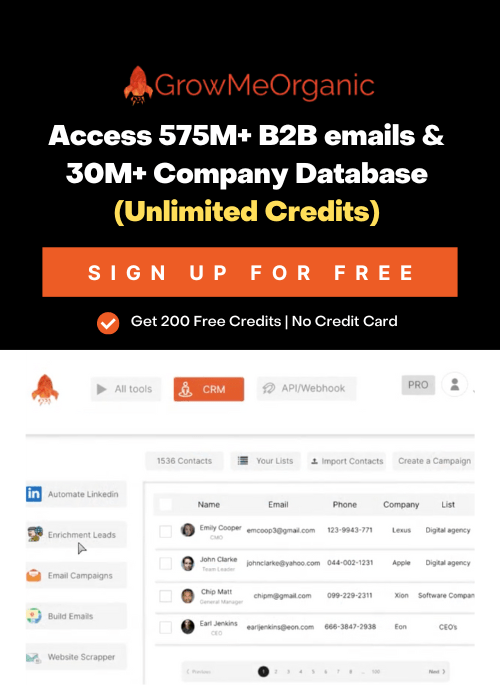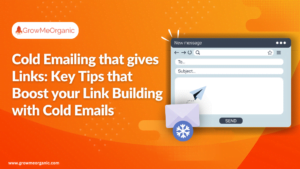99% of businesses will use at least one SaaS solution by the end of this year. This is good and bad news if you’re working in B2B SaaS. It is great because of the big market; almost every company needs your products.
Of course, not every business needs every software, but you get the general tendency. On the other hand, the competition for the clients is insane. So, how do you stand out and reach this huge audience of potential buyers? It would help if you had a SaaS SEO strategy.
If you’re only starting your SEO growth journey, you should create a plan, optimize your pages, and build links safely. But if you’ve done that by now, you require more serious steps. Which ones? In this blog, we’ll discover how to create a SaaS SEO strategy to boost growth that is both sustainable and effective.
SaaS SEO Strategy: Is It a Game-Changer?

A SEO strategy is a practice that improves your business performance on Search Engine Result Pages (SERPs). What is the difference between SEO and SEO for SaaS? SaaS SEO is similar to good-old search engine optimization but faces a far longer sales cycle.
Let’s do the math. The average SaaS sales cycle length is around 84 days. It can go up to 5.5 months if the average annual contract value (ACV) is $100k+. So, it isn’t that impulsive purchase you can make while trying to fall asleep. Potential buyers normally need around 8 touchpoints to close the deal if it isn’t emotional. That’s why relying on paid ads alone, for example, is ineffective or too expensive.
Turning a lead into a customer can take years of nurturing, depending on your product or service. Then you have to work to keep these customers happy for years to come, all while attracting new customers and expanding your business.
To attract new customers, you should focus on the following SEO aspects:
- User engagement,
- Backlink profile,
- Keyword research,
- Content optimization,
- Mobile usability,
- Domain authority (DA), and more.
Is SEO for SaaS Businesses Challenging?
I won’t lie to you. SEO for SaaS companies is complicated with several challenges. The obvious ones are competition and the changing industry nature, but it isn’t only that. Often, SaaS products help people with problems they weren’t aware of or they didn’t think the solution existed. So, how would you even target these audiences? What keywords would be relevant to them?
That is a good question. And a SaaS SEO strategy is an answer to that. The truth is that if a person needs some software, in most cases, they google a lot on related topics. And they browse many niche websites where you could publish a guest post. So, a well-elaborated SEO strategy is your answer to a highly-competitive B2B SaaS marketing budget.
What Benefits Can SEO Provide for SaaS Companies?

SEO for SaaS businesses is specific and tailored to the industry’s unique needs. But is it even worth it if it’s that complicated? Yes, when effectively implemented, you can expect multiple benefits.
✅ Increase that Is Both Consistent and Sustainable
When done right, a SaaS SEO strategy produces measurable results. Plenty of analytics tools exist to help you track and analyze the impact of your tactics. You should be able to predict trends and patterns based on your SEO actions. This requires a combination of on-page, off-site, and technical SEO practices for the best results. You can assess your return on investment (ROI) and adjust your SEO for SaaS to get long-term effects.
✅ Increased Visibility and Brand Recognition
There are over 30,000 SaaS companies currently. The competitive landscape of the SaaS industry makes it difficult for newcomers to create a recognizable brand. Your software may be the best, but it doesn’t matter if no one knows.
SEO for SaaS companies is a strategic business plan that helps businesses like yours get noticed. The race for the first page of the Google search page is stiff. How do you stand out?
You can make your website easy to find with SEO-optimized content. Many people need help to adapt to new technology and software. Use keyword research to provide valuable information and tips to make your customers’ lives easier. The more visible you are, the easier it is to get organic traffic, receive leads, and increase your conversion. SEO is the gift that keeps giving.
✅ Budget Friendly
Regarding investments with the best returns, SEO tops that list. In 2022 alone, US companies invested $71.32 billion in their SEO strategies. It is an investment that pays off in the long run.
Unlike paid publicity campaigns that may be expensive, SEO growth offers benefits that build up over time. You may spend less on Saas SEO strategy as your brand becomes well-established and recognized.
How To Develop SEO for SaaS
Developing SEO for SaaS startups requires a nuanced understanding of the industry and the scale of the business. You need specific skills to create content that maintains leads while generating new ones.
The typical SaaS marketing funnel has five stages, and your SEO strategy should optimize each step for lead conversions.
- Awareness
- Engagement
- Intent
- Conversion
- Retention
1. Set a Target
Having a goal can help you devise an effective SaaS SEO strategy. What do you hope to achieve and why? Your objectives could be brand awareness or increasing your subscriber base. It could be generating more revenue or combining those. With the goal in mind, decide what steps you need to take. Break them into smaller, actionable pieces and set a more achievable target for each stage. Remember to account for growth rate and other variables affecting your strategy.
2. Crack the Search Intent
Understanding how Google ranks your businesses is essential to figuring out how to optimize your site. Keywords research gives you an insight into what people are searching for, but the why is more important. This is what is called search intent. Crack it, and you’ll learn what content you should create based on user queries.
For example, are users frustrated and seeking information on alternatives to a specific software? Are they trying to find the nearest location to buy a product? They may have several options and are trying to make up their minds. Optimize your content with that search intent in mind to get SEO growth.
3. Optimize the Customer’s Journey Through the Funnel

Learn who your clients are and use survey data to build your buyer personas. Leverage Google Analytics and similar tools to find what these potential leads are searching for. But remember, people, do not fit into a box, so make room for flexibility.
Your audience could be at different stages of their buyer’s journey. While some customers could find you for the first time through search engines, some already know you for years. Check keywords to create content that drives lead conversion from every stage of your sales funnel.
First and Second Stages of the Sales Funnel
Keyword research is essential at this stage, like any other. Pay special attention to your product landing pages. Your content should spread the word about your products and services. Make your message clear to anyone who sees your landing page for the first time. You should explain your value proposition with this easy formula: ‘We are X helping Y to achieve Z by doing Q.’ One important goal here is brand awareness.
Besides, watch your competitors and check what keywords have poor coverage from their side. Use this to fill those gaps and get higher rankings than your alternative products. This is a crucial part of your SaaS SEO strategy.
Third and Fourth Stages of the Sales Funnel
Use keywords your buyers target to create content that addresses their queries. Push content that highlights features of your products/services or compares them with others. Is your software a cost-effective alternative to an already established one? Does it offer better robust features? These questions will help you make your SEO for SaaS more effective.
This is where the comparison keyword comes into play. X-product vs. Y-product content is among the most popular SaaS keyword searches. Use Google Trends, SimilarWeb, or Semrush to determine what your target audience is comparing and why. Play your strengths while highlighting how your product counters your competitors’ weaknesses.
Fourth and Fifth Stages of the Sales Funnel
Your content at this stage vastly differs from the previous steps. The goal here is to find repeat customers in your audience and to retain them. This isn’t only about SEO growth. It is about building a life-long relationship with your clients. Your content should use keyword research to find issues or frustrations those using your products face.
- Create educational content explaining how to incorporate certain features with other products.
- Content that troubleshoots your clients’ issues and shows how to get the most value out of your product. The topics like Secret features of X product that will blow your mind or X hacks for Y product that can make life easier.
- Offer ongoing customer support to retain your clients. Warranties and special referral discounts are great additions to your strategy.
4. Off-Page Elements for SEO Growth
This part of your SaaS SEO strategy is as crucial for boosting growth as marketing and PR. Technical SEO is vital for improving your Google search rankings. A key goal of technical SEO is to optimize user experience by improving the website with the following tactics:
- Strengthen your webpage to rank high on Google search results.
- Improve user experience by making your site easy to navigate. A well-structured page is also accessible for search engines to crawl. This creates a win-win situation for you.
- Fix your page speed, as it is an essential ranking factor. To do so, you should eliminate unused code and compress images that may slow down your page’s performance.
- Ensure that your site is mobile-friendly.
- Include simple features such as alt-text and text-to-speech to make your site accessible.
- Create XML maps to simplify the indexing of your content.
5. Link-building to Boost Authority/Growth
Link building is an essential part of your SaaS SEO strategy. It strengthens all the other optimization efforts. Besides, it helps to shape and improve your brand image. Link building can be a great addition to your social proof.
Collaborate with other SaaS blogs or sites. Consider guest blogging and influencer marketing to put yourself out there. Remember to only post your content on verified web pages with high authority domains.
Conclusion
Developing a SaaS SEO strategy that boosts growth is a high mountain to climb, yet it is achievable. SEO growth requires much effort from everyone involved, but the results are worth it. Stick to the steps above to increase traffic and drive up engagement. Your revenue and conversion rate might surprise you in the end.
About Post Author
Anant Gupta
Growth Hacker, Marketing Automation Enthusiast & Founder of GrowMeOrganic























